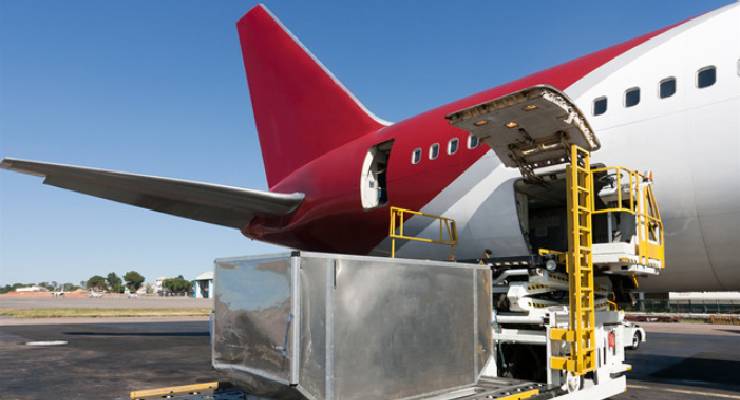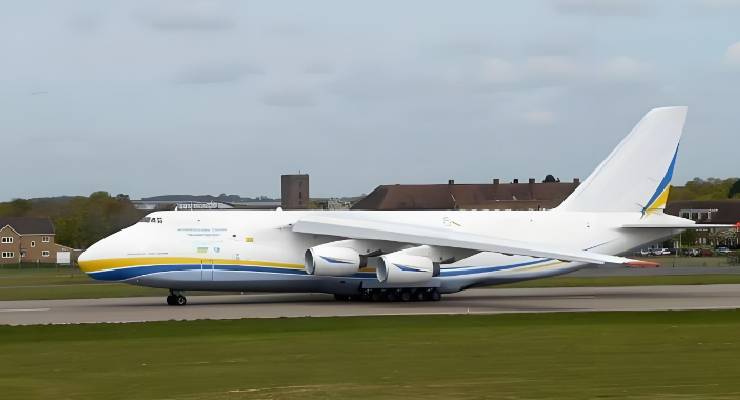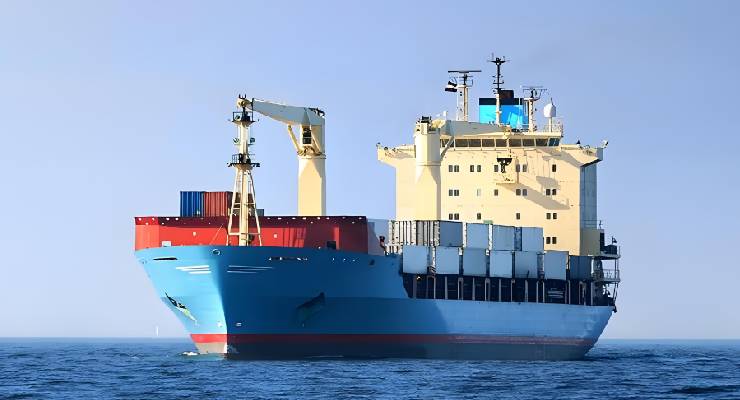
Like sea freight and rail Freight, where specialized containers are used to load and transport cargo, air freight also relies on containers to optimize the transportation of goods. While air cargo containers differ from their sea freight counterparts in size and design, they serve the same essential purpose—ensuring safe and efficient handling of cargo during transit. In air freight, these containers are referred to as Unit Load Devices (ULDs), and they come in various types and sizes to accommodate the diverse shapes and sizes of aircraft cargo holds.
Types of Air Cargo Containers
1.Enclosed Containers
2.Pallets with Net Combinations
Most air freight containers are made from materials like sheet aluminum or polycarbonate with profile frames. They are designed to fit the contours of the aircraft’s cargo hold and adhere to International Air Transport Association (IATA) standards. Each container is assigned a unique IATA code, such as AKE, AKN, PAG, and PMC, for identification.
Common Air Cargo Container Specifications
1. LD1 Container
IATA Code: AKC
Dimensions: 92″ L x 60.4″ W x 64″ H
Weight Capacity: 3,501 lbs (1,588 kg)
Volume: 173 cubic feet (4.9 CBM)
Compatibility: Boeing 747, 777
Features: Suitable for smaller packages or odd-shaped items.
2. LD2 Container
IATA Code: DPE
Dimensions: 61.5″ L x 60.4″ W x 64″ H
Weight Capacity: 2,700 lbs (1,225 kg)
Volume: 120 cubic feet (3.4 CBM)
Compatibility: B767, 787 lower hold
Features: Lower deck container, half-width with an angled side.

3. LD3 Container
IATA Code: AKE
Dimensions: 79″ L x 60.4″ W x 64″ H
Weight Capacity: 3,500 lbs (1,588 kg)
Volume: 155 cubic feet (4.39 CBM)
Compatibility: B767, 747, 777, A300, A310, MD-11
Features: Open on one side, with a flap closure.
4. LD6 Container
IATA Code: ALF
Dimensions: 160″ L x 60.4″ W x 64″ H
Weight Capacity: 7,000 lbs (3,175 kg)
Volume: 314 cubic feet (8.9 CBM)
Compatibility: B767, 747, 777, A300, A310, MD-11
Features: Full-width lower hold container with angled ends and a canvas door.
5. LD8 Container
IATA Code: DQF
Dimensions: 125″ L x 60.4″ W x 64″ H
Weight Capacity: 5,401 lbs (2,450 kg)
Volume: 245 cubic feet (6.93 CBM)
Compatibility: Boeing 767
Features: Used for bulky or oversized cargo.
6. LD11 Container
IATA Code: ALP
Dimensions: 125″ L x 60.4″ W x 64″ H
Weight Capacity: 7,002 lbs (4,170 kg)
Volume: 262 cubic feet (7.4 CBM)
Compatibility: A303, A310, DC-10
Features: Rectangular container with a canvas door and a center post that swings open for ease of loading.
Basic Air Freight Pallet Specifications
Air freight pallets, also known as Unit Load Devices (ULDs), are essential for efficiently loading and transporting cargo on aircraft. Below are the specifications for some of the most common air freight pallets used in the industry.
1. PLA Half Pallet
IATA Code: PLA
Type: Half pallet with net
Dimensions:
Length: 125 inches (3.17m)
Width: 60.4 inches (1.53m)
Height: 64 inches (1.62m)
Maximum Gross Weight: 6,999 lbs (3,175 kg)
Volume Capacity: 250 cubic feet (7.1 CBM)
Compatibility: Boeing 747, 777, 787, 707F, 727F, 737F
Features: Ideal for smaller shipments that fit within its compact size.
2. PMC/P6P/96” Pallet
IATA Code: P6P
Type: 10-ft flat pallet with net
Dimensions:
Length: 125 inches (3.17m)
Width: 96 inches (2.43m)
Height: 64 inches (1.62m)
Maximum Gross Weight: 15,000 lbs (6,804 kg)
Volume Capacity: 747 cubic feet (21.2 CBM)
Compatibility: Boeing 747, 767, 777, 787, DC-10, MD-11
Features: Standard flat pallet used in lower cargo holds and main decks of wide-body aircraft.
3. LD7/88” Pallet
IATA Code: P1P
Type: Flat pallet with net (PAG pallet)
Dimensions:
Length: 125 inches (3.17m)
Width: 88 inches (2.24m)
Height: 64 inches (1.62m)
Maximum Gross Weight: 15,000 lbs (6,804 kg)
Volume Capacity: 747 cubic feet (21.2 CBM)
Compatibility: Boeing 707F, 727F, DC8F main decks, and more
Features: Standard pallet commonly used in main decks and lower cargo holds, suitable for bulky and heavy shipments.
These pallets ensure that cargo is securely loaded into aircraft, reducing damage and optimizing space. Understanding the specifications of each type of pallet helps in selecting the right ULD for your air freight needs.

Specialized Air Cargo Container Specifications
When transporting temperature-sensitive goods or bulky cargo, specialized air cargo containers are essential for maintaining product integrity and optimizing space. Below are the specifications for some specialized air cargo containers that are commonly used in the industry.
1. LD-3 Temperature-Controlled Container
IATA Code: RKN
Type: Contoured cool container
Dimensions:
Length: 79 inches (2m)
Width: 60.4 inches (1.53m)
Height: 64 inches (1.62m)
Maximum Gross Weight: 3,500 lbs (1,558 kg)
Volume Capacity: 115 cubic feet (3.26 CBM)
Compatibility: Airbus A330, Boeing 777, Lockheed L1011
Temperature Control Range: –20°C to +20°C
Features: Ideal for transporting temperature-sensitive goods like pharmaceuticals and perishables.
2. Insulated LD-9 Container
IATA Code: RAP
Type: Cool container on P1P base
Dimensions:
Length: 125 inches (3.16m)
Width: 88 inches (2.24m)
Height: 64 inches (1.62m)
Maximum Gross Weight: 10,198 lbs (4,626 kg)
Volume Capacity: 339 cubic feet (9.6 CBM)
Compatibility: Boeing 747, 767, McDonnell Douglas MD-11
Features: Insulated container with a solid door, designed for larger temperature-sensitive shipments.
Advantages and Limitations of Air Cargo Containers
Advantages:
Enhanced Safety: ULDs are securely fastened by the aircraft’s Cargo Loading System, preventing movement during the flight.
Cargo Protection: Containers safeguard against theft, decay, and damage.
Efficient Handling: ULDs enable faster loading and unloading, reducing downtime.
Space Optimization: Containers allow for efficient stacking and space utilization, minimizing wasted space.
Limitations:
Space Constraints:
Smaller containers like AKC and DPE are not suitable for bulkier or oversized cargo, making them better suited for narrow-body aircraft.
Larger containers like ALF and ALP are ideal for bulky or irregularly shaped cargo but take up more space, limiting the overall quantity of cargo that can be loaded.
Selecting the Right Air Cargo Container with Super International Shipping for Your Air Freight
Choosing the right air cargo container is essential for optimizing space and reducing costs. Different Unit Load Devices (ULDs) serve specific purposes, and using the wrong one can result in inefficiencies and unnecessary expenses.
At Super International Shipping, our team of air freight experts is dedicated to helping you select the most cost-effective and space-efficient container tailored to your shipment’s needs.
We offer tailored solutions for your air shipping requirements, ensuring the correct ULD is selected based on the size, weight, and type of cargo. Additionally, we can work with you to design and construct a customized ULD to meet specialized cargo needs, ensuring safe, smooth, and optimized shipping for your goods.
Let Super International Shipping streamline your air freight processes, maximizing both efficiency and cost savings.
If you have goods to go by air, you can contact Winsail Logistics at any time, the following is the case of our company's air transport:
Air freight WATCHES from HKG to SSG
Door to door by air freight MONEY COUNTING MACHINE
Door to door by air freight CAR SEAT from CAN to DXB
Air freight LED BULB from PVG to DXB
Air freight CARPET from CAN to RUH
Door to door by air freight CHAIR from CAN to RUH
-
 A Comprehensive Guide to Refrigerated ContainersJun 17,2025
A Comprehensive Guide to Refrigerated ContainersJun 17,2025 -
 Guide to 20ft & 40ft Shipping Container Dimensions for Global LogisticsJun 17,2025
Guide to 20ft & 40ft Shipping Container Dimensions for Global LogisticsJun 17,2025 -
 How to track shipments sent from ChinaMay 13,2025
How to track shipments sent from ChinaMay 13,2025 -
 Guide to Importing and Shipping Cars from China to UAEMay 13,2025
Guide to Importing and Shipping Cars from China to UAEMay 13,2025 -
 Guide to Importing and Shipping Camping Gear from ChinaMay 07,2025
Guide to Importing and Shipping Camping Gear from ChinaMay 07,2025 -
 Shipping from China to YemenMay 06,2025
Shipping from China to YemenMay 06,2025

